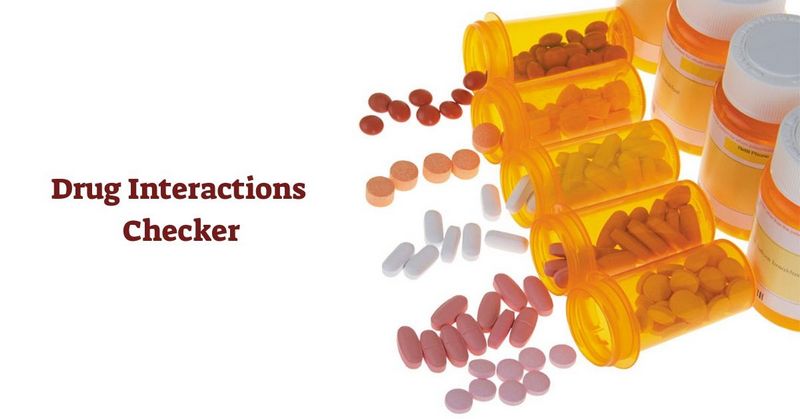
Modern medicine is impossible without modern drugs. Unfortunately, some drugs have a dangerous pair – medicines that cause side effects when taken together! BM Pharmacy brings to your attention an important list of drugs, the combination of which represents a danger to human health and even human life.
11 Dangerous and Deadly Drug Combinations
Antibiotics and oral contraceptives
Antibiotics are substances that are produced by some living organisms to destroy others. The first antibiotic was isolated by Alexander Fleming in 1928. Since then, antibiotics have changed the life of mankind. Diseases that used to be a death sentence have become curable: pneumonia, tuberculosis, meningitis, and other infections. Thanks to antibiotics, the 20th-century witnessed a demographic explosion, when the population began to grow exponentially. Antibiotics are a real miracle of medicine.
Oral contraceptives change the hormonal background so that ovulation (the release of an egg from the ovary) and pregnancy becomes impossible. There is another important action: they change the consistency of the mucus of the cervix, and it becomes impermeable to sperm. In addition to preventing unwanted pregnancy, hormonal contraceptives have a positive effect on the health of the woman as a whole: they reduce the risk of breast and ovarian cancers, prevent acne, facilitate the flow of menstruation, and so on.
The combination of these drugs can reduce the effectiveness of birth control pills, and you risk becoming pregnant. There are two reasons for that:
- Microbes in the gut improve hormone absorption. That is, hormones remain in the body longer and longer protect against unwanted pregnancy. Antibiotics destroy intestinal germs, hormones are not absorbed, so a large amount of hormones is simply lost with calla lilies;
- Many antibiotics stimulate the work of liver enzymes, so they begin to intensively destroy hormones. As a result, the concentration of contraceptives in the blood decreases, as well as the effectiveness of preventing pregnancy.
If you have to take antibiotics and contraceptives at the same time, use condoms.
Loperamide and calcium
Loperamide is the most common cure for diarrhea. It is sold without a prescription under various brands. It reduces motility and calms the intestines. It should be emphasized that loperamide should not be used if diarrhea is associated with an infection (that is, when there is fever, chills, feeling unwell). In this case, the microbes will linger in the gut, which is fraught with aggravation of the infection.
Calcium is part of two groups of OTC drugs:
- Bone preparations (in combination with vitamin D). It is taken by women after menopause to reduce the risk of developing osteoporosis;
- Antacids (drugs for heartburn) – calcium is part of some drugs that lower the acidity of gastric juice.
The main effect of loperamide is the inhibition of intestinal motility. But calcium has a similar side effect! Therefore, a combination of these two drugs can lead to very painful constipation.
If you started taking loperamide for diarrhea, take a break from calcium preparations, otherwise, your diarrhea may turn into constipation.
Verapamil and beta-blockers
Verapamil belongs to the group of calcium blockers. Calcium constricts blood vessels. Verapamil blocks its action – the vessels expand, which leads to two important effects: blood pressure decreases and the blood supply to the heart improves, and ischemic pains pass.
The potential danger of verapamil is that it also blocks calcium channels in the conduction system of the heart, so it can lead to bradycardia and intracardiac blockade.
Beta-blockers (atenolol and other drugs with the ending “-ol”) are the most important drugs for the treatment of heart failure. In heart failure, the heart hardly pumps blood through the body. Beta-blockers, on the one hand, reduce heart contractions, but on the other, their effectiveness increases. These drugs also make it difficult to conduct an electrical impulse along with the conduction system of the heart.
Both verapamil and beta-blockers reduce heart contraction. Therefore, their combination can lead to a strong slowdown in heart rate (bradycardia and intracardiac block). In the worst case, it can stop the heart.
When taking these medicines together, it is important to control the pulse several times a day, write it in a diary. In case of severe bradycardia (less than 50 / min) consult a doctor.
Cold and allergy medicines
Antihistamines are the most common allergy medications. They reduce the release of histamine, which causes all the unpleasant effects of allergies: itching, redness, tearing, etc. Antihistamines effectively eliminate all these symptoms.
Cold preparations consist of several active ingredients. Typically, these are:
- Paracetamol – to reduce headache and temperature;
- A substance for narrowing blood vessels to reduce swelling of the nasal mucosa, thereby reducing a runny nose;
- Antihistamine – in this case, it reduces the effects of the inflammatory reaction (sneezing, tearing, etc.)
Thus, these drugs very effectively eliminate the symptoms of colds and flu. However, they do not fight the virus, do not forget about it!
The composition of medicines for allergies and colds includes antihistamines.
A side effect of these drugs is drowsiness. Therefore, you risk losing vigor for the whole day when taking both drugs.
In addition, such a problem can be very dangerous if, for example, you drive a car that day.
If you are taking cold medicine, give up antihistamines for a while OR take second-third generation drugs (clarithromycin) that have less effect on the nervous system.
Warfarin and painkillers
Warfarin is a drug that reduces blood coagulation. It reduces the production of blood coagulation factor proteins. Therefore, the blood becomes thinner and the risk of blood clots is reduced. Most often, warfarin is prescribed for atrial fibrillation, in which blood clots form in the heart, which can “come off”, fly into the brain and cause a stroke.
The main danger is that an overdose of warfarin can cause bleeding and increase the risk of intracranial hemorrhage.
Reducing blood coagulation is a side effect of non-steroidal anti-inflammatory drugs. Therefore, the combination of NSAIDs with warfarin significantly increases the risk of dangerous bleeding.
If you have to take warfarin and painkillers at the same time, avoid pain medications from the NSAID group. Instead, use paracetamol – in most cases, it replaces NSAIDs well.
Cardiac aspirin and painkillers
Cardiac aspirin is one of the most revolutionary drugs of all time. Its use can significantly reduce the risk of dying of heart attack and angina pectoris. Cardiac aspirin (low-dose aspirin) inhibits the production of thromboxane, which contributes to blood clots. As a result, the process of thrombosis slows down.
The most common painkillers are non-steroidal anti-inflammatory drugs (ibuprofen, nimesulide, and many others). These drugs block the production of prostaglandins, substances that cause inflammation and pain. Therefore, NSAIDs are extremely effective in almost all types of pain (head, joint, muscle, etc.)
It is dangerous to combine cardiac aspirin and painkillers. First of all, both cardiac aspirin and NSAIDs have a side effect on the gastric mucosa, so when taken together they can cause ulcers and stomach bleeding.
Secondly, NSAIDs compete with aspirin for the same enzyme. But at the same time, they block it worse than aspirin. Therefore, when used together, a decrease in the effectiveness of cardiac aspirin is possible.
If you are forced to combine these drugs:
- Do not take these drugs on an empty stomach;
- Take NSAIDs either at least 30 minutes after cardiac aspirin or 8 hours before;
- If you are taking cardiac aspirin, try not to take NSAIDs at all. Paracetamol, which does not interact with aspirin, helps to reduce pain in many cases.
Statins and fluconazole
Statins are the main drugs for lowering cholesterol. They disrupt the production of cholesterol by the liver, so the liver is forced to process already existing cholesterol in the blood.
Fluconazole is one of the key antifungal drugs. It is effective against candidiasis – thrush, which most often affects the genital tract and oral mucosa.
Statins are processed by liver enzymes. Fluconazole inhibits the action of these enzymes, which leads to excessive accumulation of statins in the body. In large quantities, statins can cause rhabdomyolysis – muscle damage.
Since fluconazole is usually taken in short courses (from one to several days), it is advisable to cancel statins for this period.
ACE inhibitors and spironolactone
ACE inhibitors (lisinopril, captopril, and other drugs with the ending “-pril”) are the most important drugs to combat high blood pressure.
ACE is an enzyme that is involved in the production of a substance called angiotensin II, which constricts blood vessels. ACE inhibitors block the production of this enzyme, as a result of which the vessels expand, and the pressure decreases.
Spironolactone is one of the most important drugs for the fight against heart failure. With heart failure, the heart does not work well, it is difficult for it to pump large volumes of fluid. Spironolactone removes excess salt and fluid from the body, blood volume decreases, the load on the heart decreases. In addition, this drug reduces the replacement of normal heart tissue with scar tissue, which will not work.
Both ACE inhibitors and spironolactone increase the concentration of potassium in the blood. This can lead to hyperkalemia. It is dangerous for disturbances in rhythm and conduction in the heart.
If you are forced to take these medicines together, it’s important to:
- regularly take a blood test for potassium;
- limit the use of foods high in potassium (bananas, lentils, parsnips, sweet potatoes).
Antidepressants and painkillers
If you have ever been prescribed antidepressants or painkillers most likely knows that you can’t take them together.
And SSRIs (selective serotonin reuptake inhibitors belonging to one of the classes of antidepressants) and non-steroidal anti-inflammatory drugs (NSAIDs, which are often used as painkillers and antipyretics), increase the risk of bleeding in the stomach and esophagus up to 600 (!)%. A recent study by Dutch experts showed that a combination of these two drugs often provokes gastrointestinal bleeding compared to taking each of these drugs separately.
Both SSRIs and NSAIDs are triptans and affect serotonin levels. The result of their interaction is not only an increase in the risk of internal bleeding but also unpleasant side effects: anxiety, fever, rapid heartbeat and breathing.
Painkillers and sedatives
Both anti-anxiety drugs and opioid painkillers, such as codeine and morphine, act as sedatives. If you take these drugs at the same time, their toxic effect increases. Such an overdose of antidepressants can significantly reduce both the respiratory rate and the heart rate, and sometimes to a fatal level.
People taking these drugs in combination are likely to receive prescriptions for them from different doctors and buy them at different pharmacies. This method is also called “shopping for doctors” – the patient consciously visits several doctors, receiving prescriptions for drugs, and each of the doctors does not know about the other’s prescriptions.
Unfortunately, due to the combined effect of these drugs on the respiratory system, the outcome of their total intake for humans can be fatal.
Acetaminophen and opioids
Despite their popularity, these drugs can be very dangerous if taken in quantities exceeding the recommended dose. Often people try to increase the effect of acetaminophen by taking it with codeine-containing drugs. When these two drugs are taken together, they can very quickly cause serious liver damage.
A 2015 Seattle study found that 38% of people developed acute liver failure because they accidentally took too much of the drug or more than one kind of pill. For those who took medications containing both acetaminophen and opioids, acute liver failure developed in 63% of cases.







